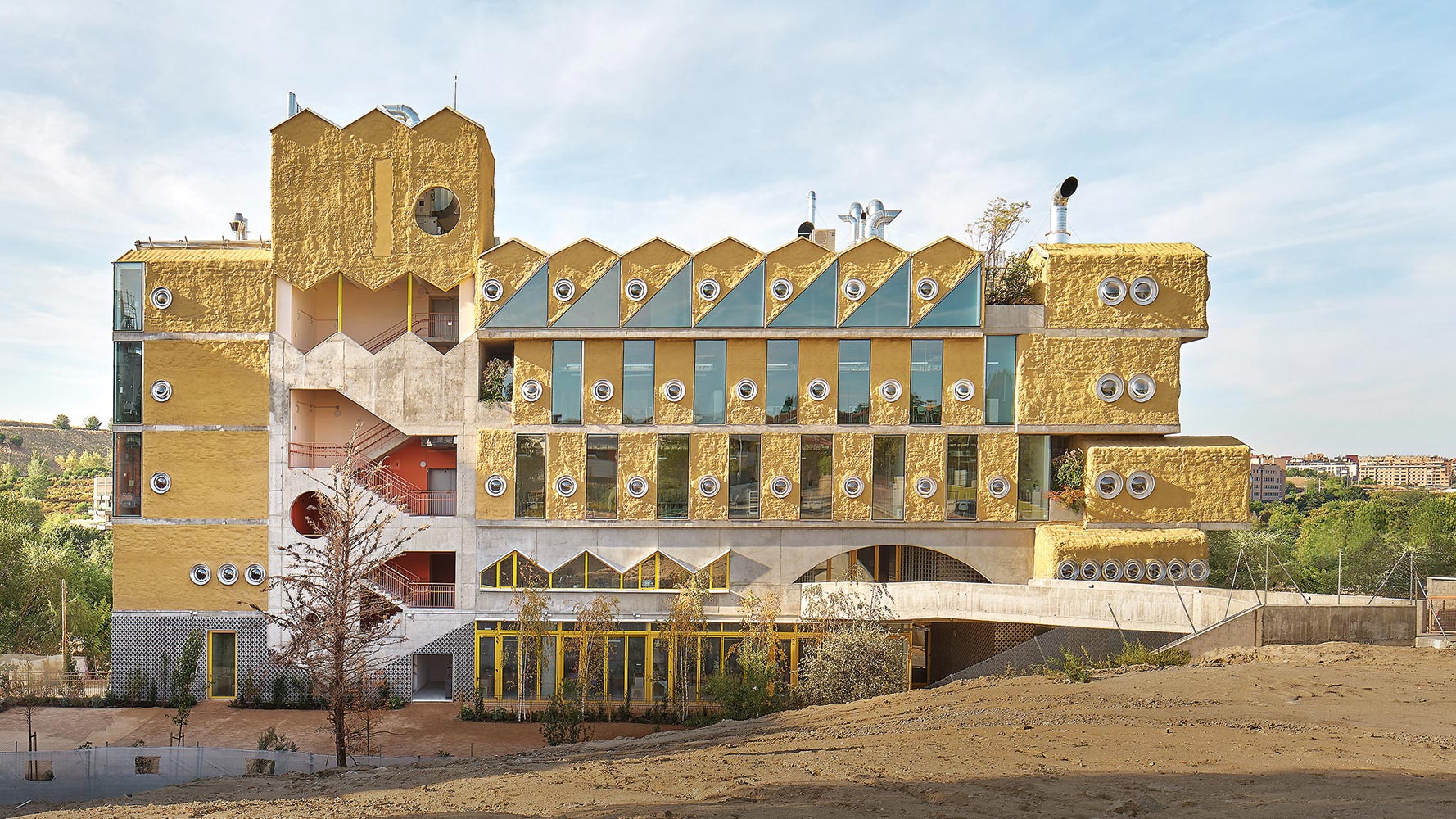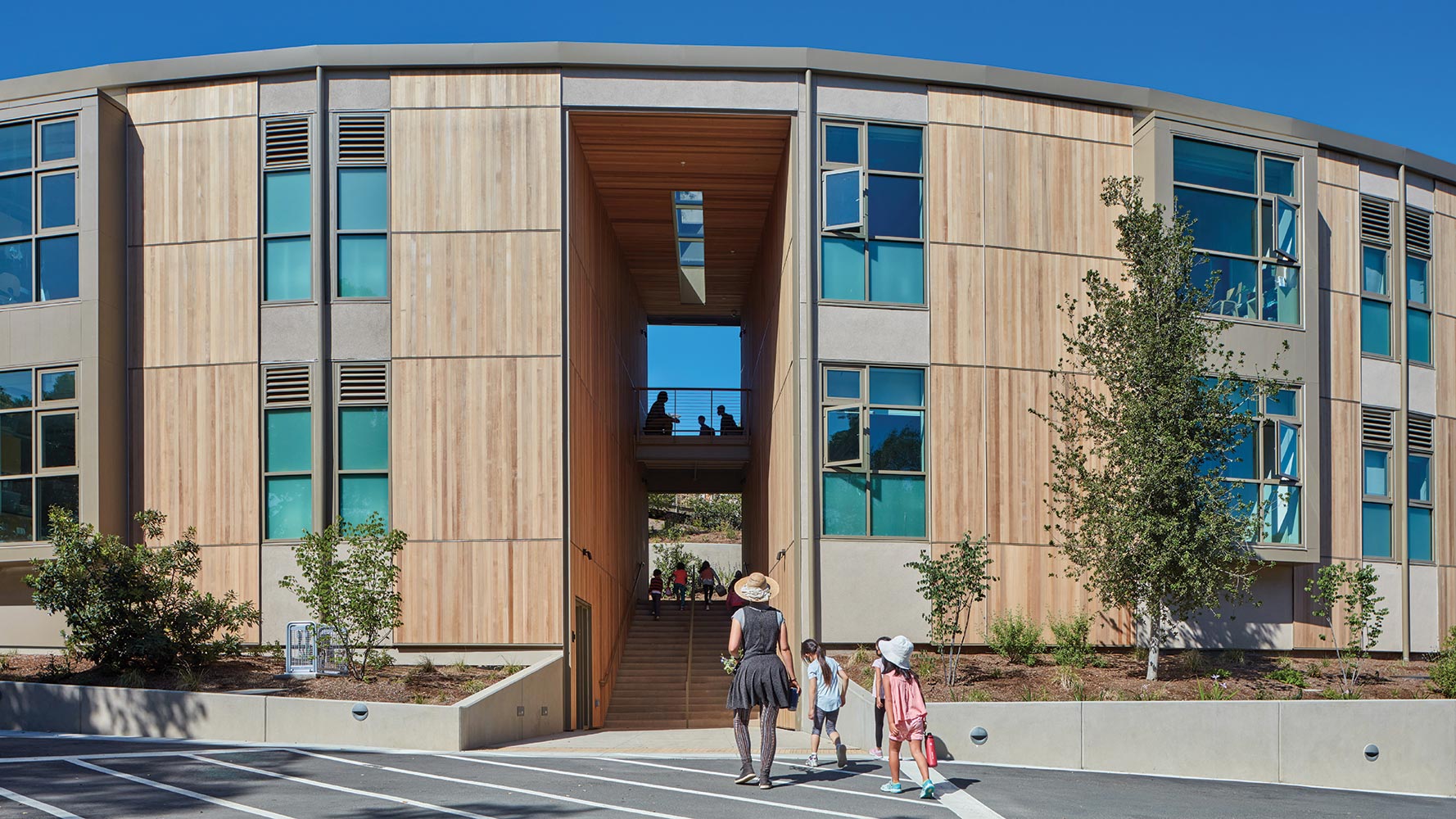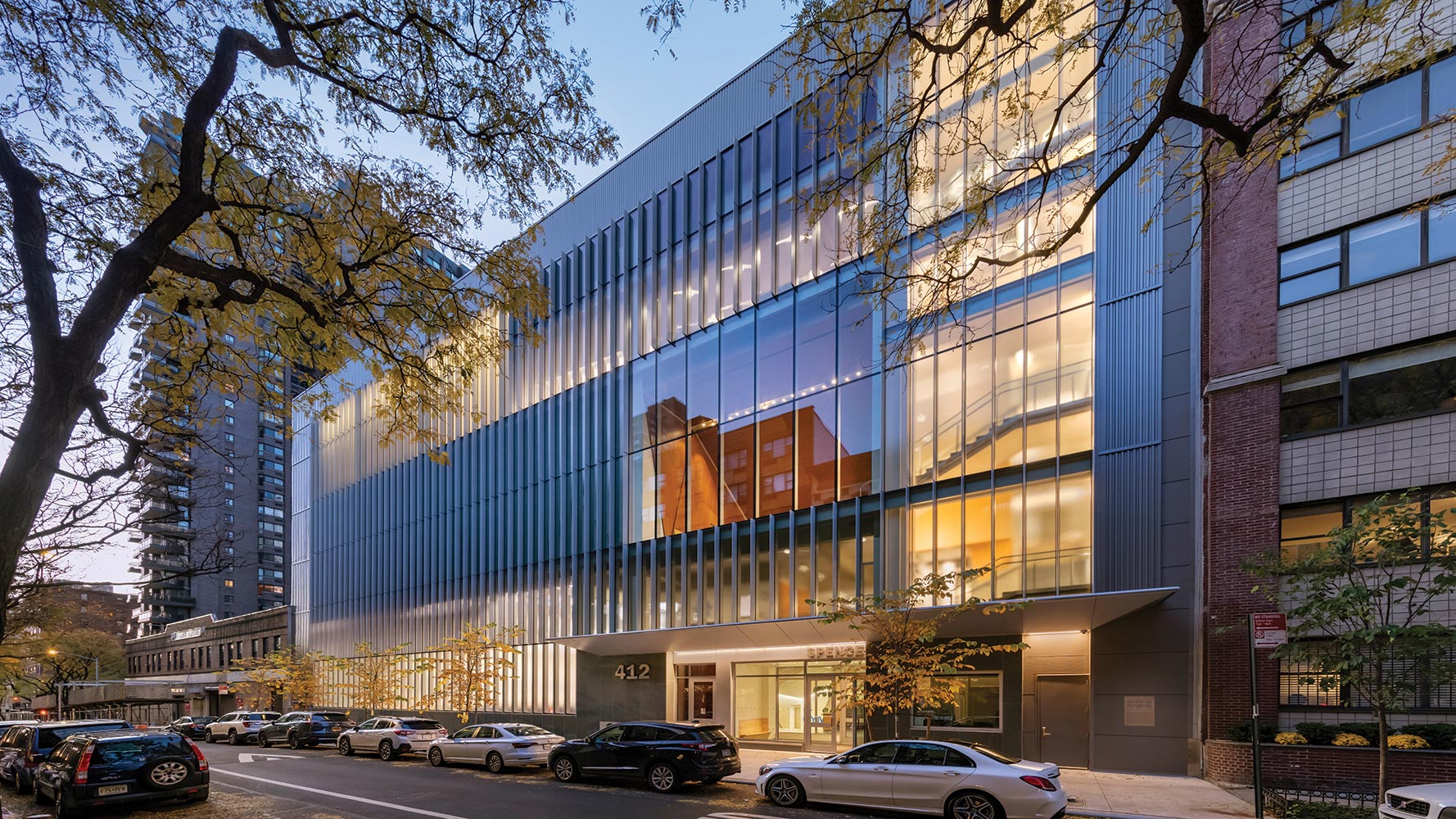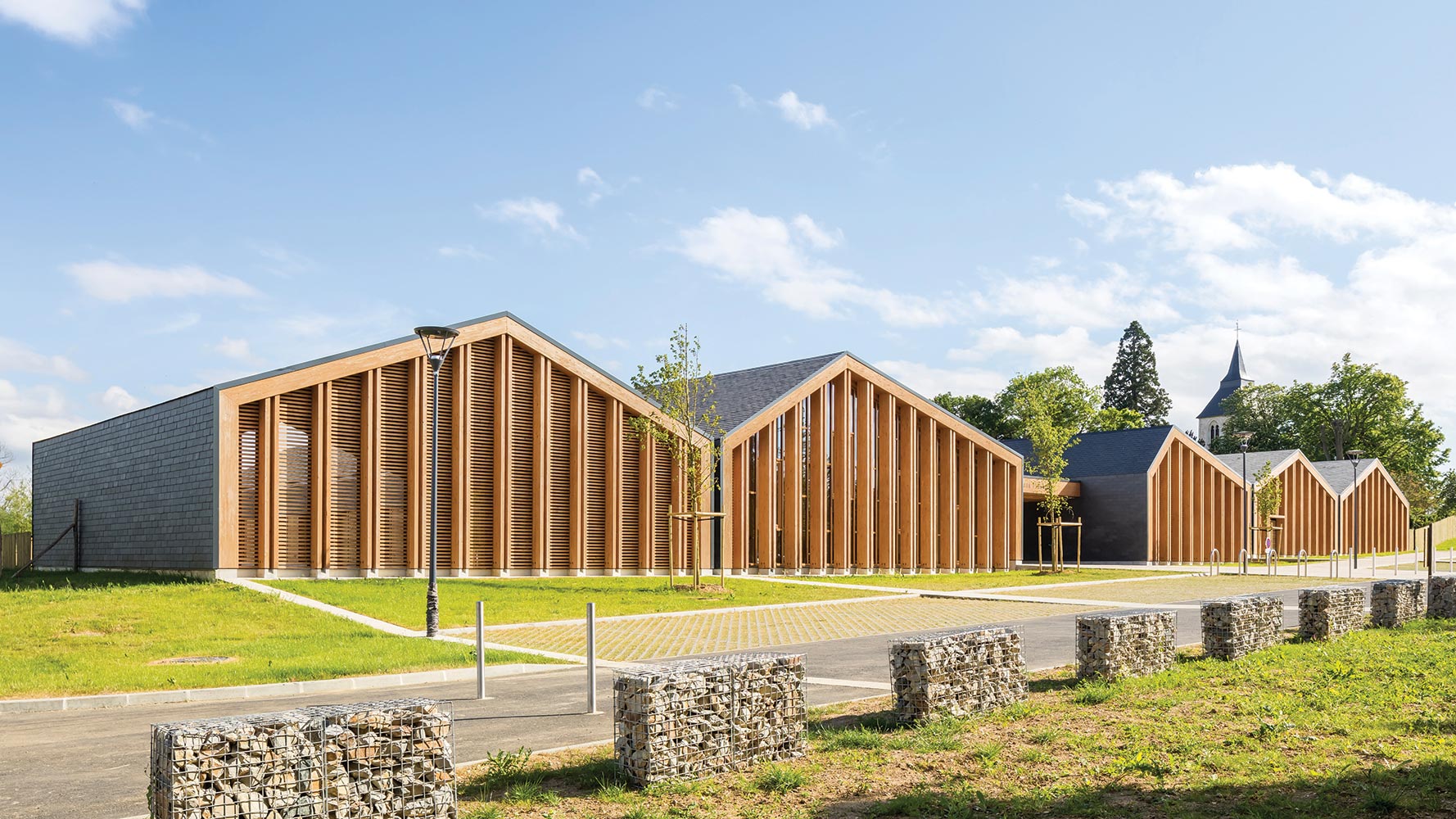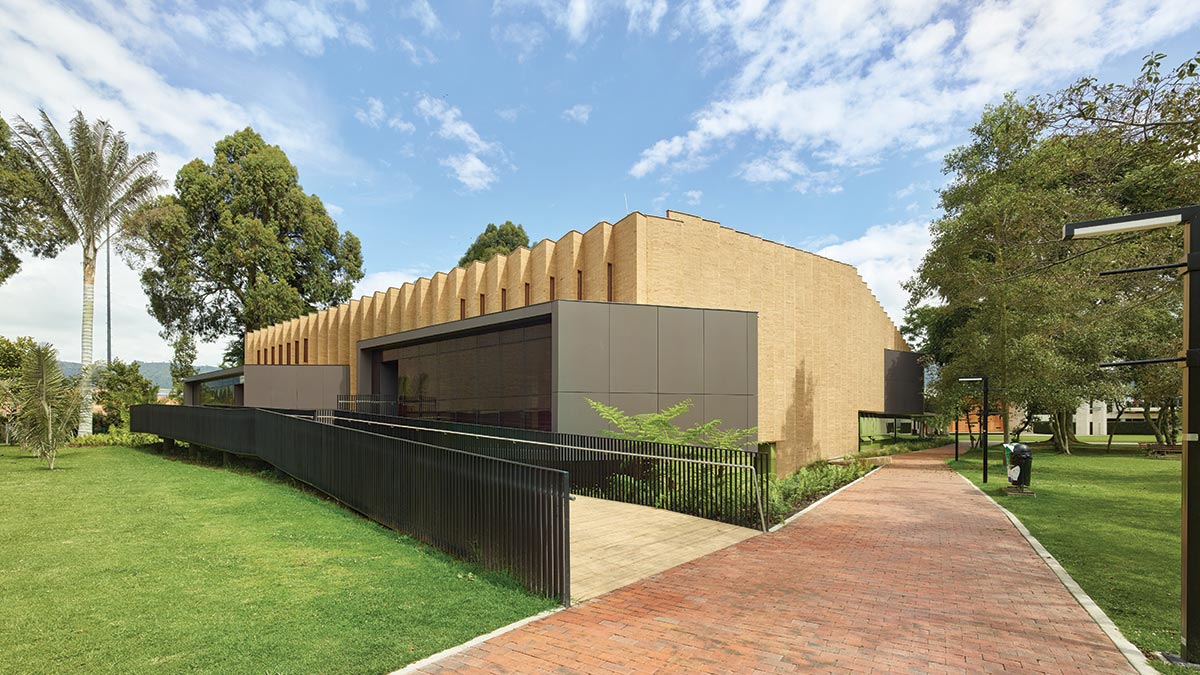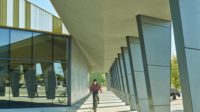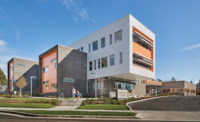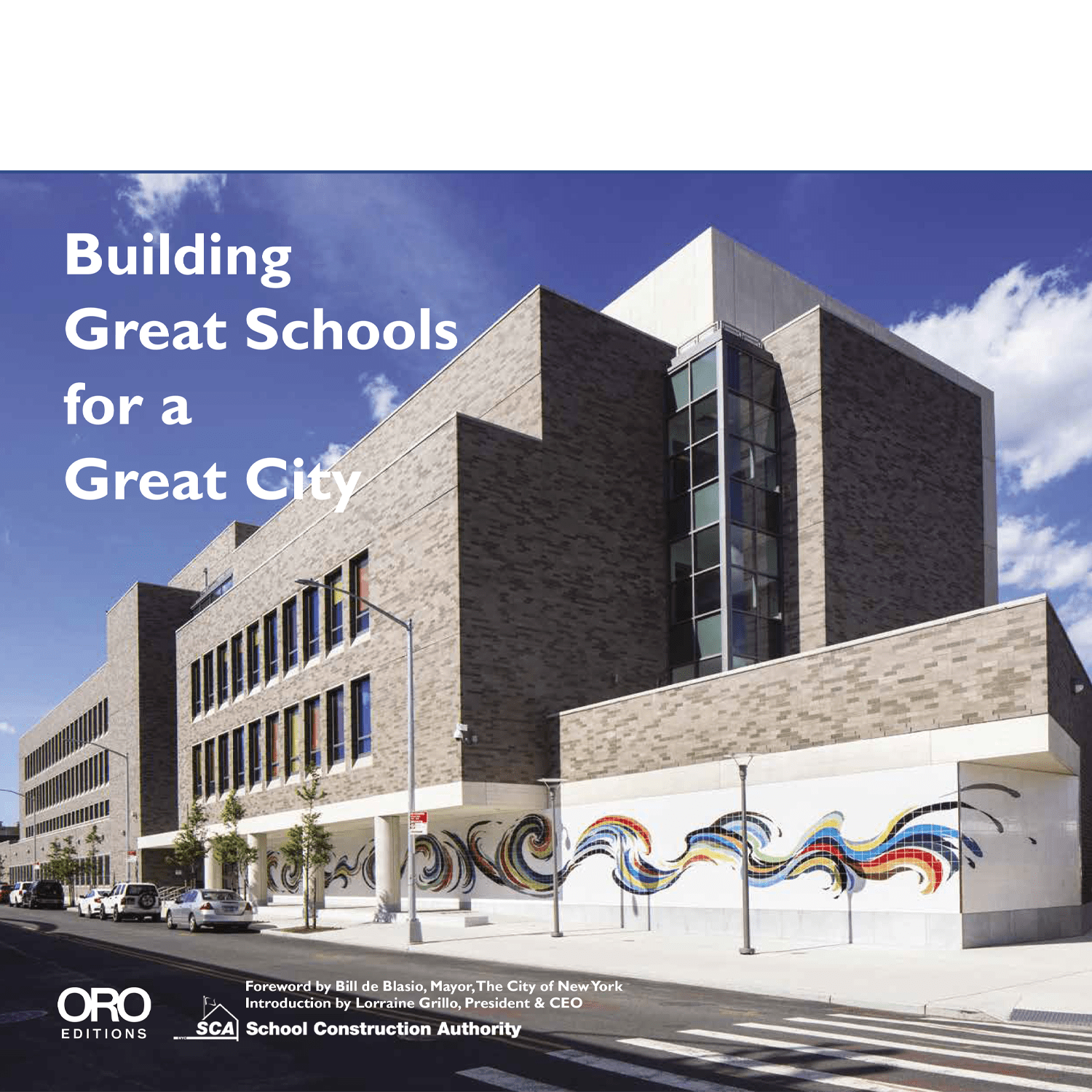This month's Building Type Study combines with the CEU to showcase a range of creative early-childhood through high-school learning environments—from sustainable buildings-as-teaching-tools in Spain and California, to modular timber structures in rural France designed to connect and grow, and multi use athletic facilities on urban campuses in New York and Bogotá.
Continuing Education

To earn one AIA learning unit (LU), including one hour of health, safety, and welfare (HSW) credit, read the articles above and complete the quiz. Upon passing the test, you will receive a certificate of completion, and your credit will be automatically reported to the AIA. Additional information regarding credit-reporting and continuing-education requirements can be found at continuingeducation.bnpmedia.com.
Learning Objectives
- Discuss how K–12 architects are lowering the embodied- and operational carbon footprint of school buildings.
- Outline strategies K–12 architects are using to reduce wildfire risk and conserve water.
- Describe retrofit schemes for school buildings that are structurally and functionally outmoded.
- Describe ways schools can be designed for maximum flexibility to allow for changing curricula and growth in student population.
AIA/CES Course #K2301A

